

 The South African
The South African
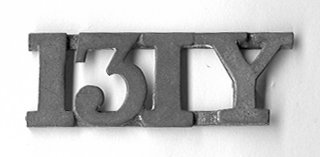
Example of a shoulder title of the 13th Battalion,
Imperial Yeomanry, held in the Insignia Collection
of the SA National Museum of Military History.
'I found the men forming the rear screen, which consisted of the 86th Company, Imperial Yeomanry, very much out of hand and lacking both fire discipline and knowledge how to act. There seemed to be a want of instructed officers and non-commissioned officers.'
Lt-Gen Lord Methuen, 13 March 1902 (Creswicke, 1902, Vol 7, p187).
The Imperial Yeomanry was born out of a week of disasters suffered by the British Army Stormberg (10 December 1899), Magersfontein (11 December 1899), and Colenso (15 December 1899) - that became known as 'Black Week'. After these setbacks, it became obvious that mounted infantry were needed in large numbers to counter the fast moving, hard-hitting Boers. At the beginning of the war, there had been many offers from colonels of existing yeomanry regiments in Britain to provide forces for deployment in South Africa, some at no cost to the British Government, but all had been firmly refused.
The yeomanry were a volunteer organisation that, by 1900, had been in existence for a hundred years. A decision was taken by the War Office on 13 December 1899 to allow a contingent of volunteer forces, based on the existing yeomanry regiments, to be deployed in South Africa. The birth of the Imperial Yeomanry was through a Royal Warrant, dated 24 December 1899. The new Imperial Yeomanry was to be raised on a county basis, with the core of the men drawn from existing volunteer units, the remainder being recruited from individuals who met the criteria for admission. (A company consisted of 121 men; a battalion, including a machine-gun section, totaled 526 men).
The Royal Warrant, 24 December 1899 (Asplin, 2000, Vol 1 , p5; Comer, 1902, pp8-10)
The original contingents of IY were a collection of individuals generally regarded as socially superior to the men of the Regular Army alongside whom they meant to serve. Several companies were raised by private individuals. The 47th Company (Duke of Cambridge's Own) consisted almost totally of gentlemen from the city of London who not only gave their wages to the Imperial War Fund but were willing to pay for a horse, their equipment and passage to South Africa. The men of this corps, like every member of the Imperial Yeomanry, was entitled to a grant of £65 on joining. There was also a battalion of Sharpshooters raised by the Earl of Dunraven; the 19th Battalion, 'Paget's Horse', raised by Mr George Paget; and the 20th Battalion, 'Rough Riders', raised by Lord Latham (Asplin, 2000, Vol 1 , p5; Amery, 1903, Vol 2, p18; Report of His Majesty's Commissioners, pp70-1).
The cost of equipping each recruit amounted to £170. The special purpose of this scheme was to attract men of social standing and education. In total, 50% of the original contingent were from the middle and upper classes. This figure included many troopers who had resigned a county Yeomanry commission and were eager to get involved in the conflict in South Africa. The men received two to three months' training. The majority could handle fire-arms and their general physique was regarded as better than that of the regular soldier. Most of the commanding officers had received commissions in the Regular Army. However, the standards of the troops raised tended to vary considerably. The regulations, requiring proficiency in both riding and shooting, were not strictly enforced. This meant that some men arrived in South Africa with minimal skills in horsemanship. Many more were found to be poor marksmen, a weakness that, sadly, some would not live to regret (Asplin, 2000, Vol 1 , p6).
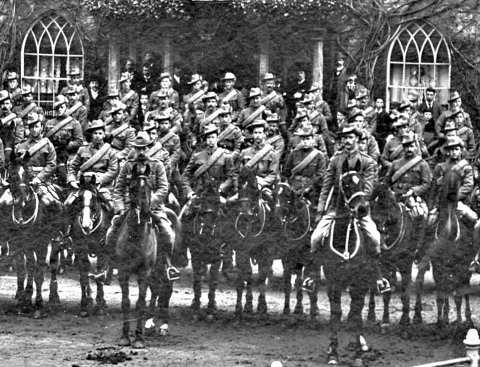
A Yeomanry regiment assembles at Clarke's Family Hotel, Castle Green,
in England before their departure for South Africa (Photo: SANMMH).
The first contingent of IY comprised 550 officers and 10 731 other ranks, making up twenty battalions of four companies each, except the 8th and 16th battalions, which had three companies each. The IY began to arrive in South Africa from early February until early April 1900. The 17th and 18th battalions, being part of the Rhodesia Field Force, landed in Beira, Mozambique. (See Table 1).
| Battalion | Companies | |||
|---|---|---|---|---|
| 1 IY | 1 | 2 | 3 | 4 |
| 2 IY | 5 | 21 | 22 | 32 |
| 3 IY | 9 | 10 | 11 | 12 |
| 4 IY | 6 | 7 | 8 | 28 |
| 5 IY | 13 | 14 | 15 | 16 |
| 6 IY | 17 | 18 | 19 | 20 |
| 7 IY | 25 | 26 | 27 | 28 |
| 8 IY | 23 | 24 | 77 | |
| 9 IY | 29 | 30 | 31 | 49 |
| 10 IY | 37 | 38 | 39 | 40 |
| 11 IY | 33 | 34 | 35 | 36 |
| 12 IY | 41 | 42 | 43 | 44 |
| 13 IY | 45 | 46 | 47 | 54 |
| 14 IY | 53 | 55 | 62 | 69 |
| 15 IY | 56 | 57 | 58 | 59 |
| 16 IY | 63 | 66 | 74 | |
| 17 IY | 50 | 60 | 61 | 65 |
| 18 IY | 67 | 70 | 71 | 75 |
| 19 IY | 51 | 52 | 68 | 73 |
| 20 IY | 72 | 76 | 76 | 79 |
Table 1: Organisation of the first contingent of Imperial Yeomanry, which arrived in South Africa from February to April 1900.
After disembarking in Cape Town, the troops encamped at Maitland. The camp was understaffed and had few facilities available to cope with the huge influx. However, on the positive side, many of the companies were retained in the camps for long periods, awaiting transport to the front, and this gave them sufficient time for much needed training and acclimatisation (Amery, Vol 6, p270; Watkins Yardley, 1904, pp5-6).
1900
The IY's first action took place on 5 April 1900, when elements of the 3rd and 10th battalions were engaged with a force of foreign volunteers under the command Count Villebois-Mareuil on the farm, 'Tweefontein', south-east of Boshof. A series of tactical errors led these foreign Boer sympathisers to be surrounded and the Count was killed. It was a victory for the IY, but not without losses. Three men were killed, including two officers. Later, as at Lindley, the Boers would prove to be a much tougher and elusive enemy (Asplin, 2000, p6; Wilson, With the Flag to Pretoria, Vol 1 , p586-7).
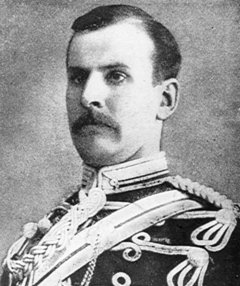
Boyle, Capt Cecil W (c 1853-1900) of the 40th Company, 10 Bn, Imperial Yeomanry,
was killed in action at 'Tweefontein' farm near Boshof on 5 April 1900. He had come to
South Africa in December 1899, bringing with him thirty of his own horses for active service.
Boyle, who was the first officer of the IY to die in the war, is interred in the cemetery in Boshof.
(Photograph: Wilson HW, With The Flag To Pretoria, Vol 2).
Having rested his men for six weeks, Lord Roberts left Bloemfontein on 3 May 1900, resuming his advance in the Orange River Colony (formerly the Orange Free State). Meanwhile, 40 km to the east, a force of 18 000 men, commanded by Lt-Gen Ian Hamilton and Lt-Gen H E Colvile, moved along a parallel course. The next day, Roberts communicated with Lt-Gen Sir Leslie Rundle, commander of the 8th Infantry Division, charging him with the task of preventing any Boers from re-occupying the south-eastern Free State. In order to carry out this task, Rundle, with 8 000 men, was to proceed on a north-easterly course with the support of 3000 men of the Colonial Division under Maj-Gen Sir E Brabant.
On 25 May 1900, Maj H S Dalbiac's 34th (Middlesex) Company of the 11th Battalion, Imperial Yeomanry, acting as an advance guard, moved far ahead of Rundle's Division and entered Senekal, which was found to be empty of armed burghers. The town was attacked during the day and Dalbiac and three others were killed. Four were wounded and thirteen surrendered, while seven troopers made good their escape. The attacking Boers decided not to pursue them and, instead, made arrangements for the care of the wounded. The British artillery brought ineffectual artillery fire to bear but it was too late and the Boers retired to the outskirts of the town. When the bulk of the division arrived later that day, the town was formally occupied. The funeral of the four Imperial Yeomen killed took place on the following day in the Senekal Cemetery. One Boer killed was also buried there (Watt, 1991, MHJ Vol 8 No 6; Corner, 1902, pp95-102).
The fight at Lindley was a humiliation for the British. The 13th IY of 500 men under the command of Lt-Col B Spragge had been ordered to join the 9th Infantry Division under Gen Sir H Colvile at Kroonstad. Due to a mix-up in communications Spragge claimed he was sent a telegram but Colvile denied sending one - the battalion entered the town of Lindley on the afternoon of 27 May 1900. Instead of meeting up with Colvile, Spragge encountered, to his horror, a large group of Boers. He made the decision to hold a group of hills outside the town and to await help. Over the next three days, the situation grew rapidly worse. Spragge was surrounded and had to endure rifle fire from all sides, while the number of Boers under Commandant P de Wet and General Prinsloo continued to grow, and they brought artillery to bear on the besieged. The position became untenable and, with no chance of holding out, Spragge surrendered with a loss of 27 IY killed or died of wounds. Amongst the dead was Capt Sir J E C Power (the Earl of Leitrim), a whiskey baronet (Pakenham, 1979, p436). The Boers captured over 400 men. To make matters worse, the surrendered battalion, the 13th, were the Duke of Cambridge's Own and three Irish companies. These men symbolised the wealth and power that had been associated with the IY corps (Asplin, 2000, p6).
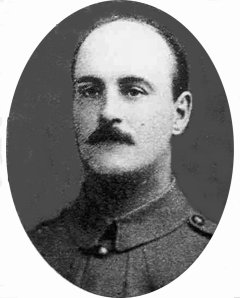
Power, Capt Sir John Elliott Cecil (1870-1900) of the 5th Bn Royal Irish Regt, died, on 1 June 1900, of wounds received four days previously at Lindley.
He was a whiskey baron from Ireland. On formation of the Imperial Yeomanry, he volunteered for active service and joined that corps in February 1900 as a lieutenant.
He served with the 46th Company of the 13th Bn IY up to the time of his death. He is buried in Lindley.
Sir John was the brother of Capt Sir E D L P Power who also saw service in the war and died of enteric fever in Kroonstad.
(Photograph: Graphic/ Illustrated London News).
Towards the end of April 1900, Lord Roberts sanctioned the formation of a small column under Sir Charles Warren to subdue the Boers in Griqualand West and British Bechuanaland. Included in this force of 2 000 infantry and some artillery were the 23rd and 24th companies of the 8th Battalion, Imperial Yeomanry. Warren set out to capture the hamlet of Campbell and then to advance on Griquatown and Kuruman. As supplies were running short, he decided to halt at Faber's Put and await provisions sent up from Belmont. By the early morning of 30 May 1900, some 600 Boers under de Villiers had surrounded Warren's camp and launched an attack from three directions. After encountering rifle fire to the west, the Boers withdrew. In the centre, near some kraals where the IY were encamped and from a garden, the Boer attack was pressed home vigorously. Most of the IY were brought together and hurried to the southern perimeter to deal with the Boer threat from that quarter, but not before they had lost nine men killed and several wounded. Realising that they would not succeed in achieving their objective of capturing the camp, de Villiers called off the attack and the Boers withdrew.
The mounted men were unable to pursue the retreating Boers, their horses having been stampeded during the fight. Most of the British casualties were among the IY, who lost eighteen men killed or died of wounds out of a total of 23 fatalities (Amery, Vol 4, pp238-41; Williams, 1941).
During the remainder of the year, 1900, the Imperial Yeomanry were involved in a number of minor victories. On 11 July 1900, a column commanded by Maj-Gen H L Smith-Dorrien encountered a Boer commando near On rust, 25km north of Krugersdorp. The 19th Company of the 6th Bn Imperial Yeomanry was involved in the sharp skirmish that ensued. During the action, the British artillery was put out of action and Smith-Dorrien lost four men killed. There were no IY fatalities. The Boer wounded were estimated at eighty and their leader, Combat-General S F Oosthuizen, was to die of wounds (Amery, Vol 4, pp354-5; Wilson, 1902, After Pretoria, Vol 1 ; Jones & Jones, 1999, p164).
Lt-Gen Lord Methuen's column, one of four in the theatre of operations in the hunt for Chief-Commandant C R de Wet, was ordered to watch the crossings of the Vaal River near Parys. De Wet found himself hemmed in on the south, but was not deterred from making an attempt at an incursion into the Transvaal. In an effort to contain the movements of de Wet, Methuen's column, which included the 3rd and 5th battalions, Imperial Yeomanry, and regular troops, played a leading role at the battle of Tygerfontein on 7 August 1900. Methuen's force succeeded in evicting their quarry from the hilly country along the Vaal River and capturing one ammunition wagon, with a loss of twelve killed and thirteen wounded. There were no Yeomanry casualties. De Wet then followed a north-easterly route and sent men forward to secure the pass at Buffelshoek, where he laagered, Methuen, by then, having lost touch with him. However, on 9 August 1900, after receiving reports of de Wet's activity, Methuen sent forward his 3rd, 5th and 10th battalions, Imperial Yeomanry, under Lord Chesham. The leading battalion delivered an attack on a line of koppies, finally rushing their objective after support given by pom-pom fire.
Beyond these hills was another line of koppies which were also captured by the 3rd Bn, IY. The Boers were driven into confusion and left behind six wagons and a quantity of livestock. Methuen continued his pursuit of the Boer leader. At Frederikstad, he left his infantry behind and continued the chase, lightly equipped, as speed was essential, and making good use of the IY. De Wet headed in a westerly direction, while Methuen was able to take a more direct route and meet up with him at Syferbult. The Boers were compelled to abandon a British gun, captured earlier at the Battle of Stormberg (10 December 1900), along with some wagons and 60 British prisoners of war (Amery, Vol 4, pp195, 422-7; Wilson, After Pretoria, pp43-4, 47; SA War Casualty Roll, August-December 1900,1982, pp8-9).
The hunt for de Wet continued and, on 5 November 1900, a column of mounted infantry and the 6th Battalion, Imperial Yeomanry, under Lt-Col P W J Ie Gallais, entered Bothaville from the north and came under artillery fire from Boer positions south of the Valsch River. Early on the following morning, the British advanced and attacked a Boer laager at Doornkraal. Le Gallais was killed, but a small force resisted de Wet's fierce counter-attacks and eventually forced the burghers to abandon their guns and surrender. During the action, 40 Yeomen took up a position on the flank of the British artillery and came under pressure, to be relieved by the arrival of the mounted infantry. The British losses were thirteen killed (with no Yeomanry deaths) and 31 wounded. The Boers left 25 dead and wounded on the field (Amery, Vol 5, pp15-21; Wilson, After Pretoria, Vol 1, pp179-86; Pakenham, 1979, pp474-6).
During October 1900, Lt-Gen Sir L Rundle's 8th Infantry Division, after having garrisoned Vrede, marched to Bethlehem. Here the division left another strong garrison and resumed its advance towards Harrismith on 26 October 1900. A short distance outside the town, Rundle's men encountered a group of Boers holding a position near the road. The 3rd Company, 1st Bn, and 41st Company, 4th Bn, Imperial Yeomanry, supported by infantry and artillery, turned the Boer right flank with a loss of three killed and seventeen wounded. There were only two Yeomen wounded (Wilson, After Pretoria, Vol 1 , p188; Moffett, 1903, pp139-40).
On 9 September 1900, near Lichtenburg, the 3rd Bn IY, serving as the advanced guard, became engaged with the rearguard of a Boer convoy which was then attacked by the 5th Bn IY. 'The Yeomanry were beautifully handled, advancing in alternate sections, one section always covering with its fire the movement of the others'. By mid-afternoon, owing to the exhaustion of the pursuers, the attack was called off. Of 80 wagons in the convoy, 22 fell into the hands of the British. A quantity of ammunition, two heliographs and oxen and sheep were also captured. British casualties amounted to 13 men wounded (no Yeomen) (Wilson, After Pretoria, Vol 1, p191).
A small British garrison was attacked at 'Hamelfontein' farm, 35 km east of Philipstown, on 17 December 1900. Lt Fletcher, who commanded twenty Yeomen from 32 Company, 2 IY, and nine Regular Army infantrymen, was determined to make a stand. Rough defences had been constructed and, using these for cover, Fletcher's party was able to withstand the Boer attack for eleven hours, eventually beating them off. The defenders lost two Yeomen killed and seven men wounded. Boer losses are unknown (Wilson, After Pretoria, Vol 1 , p274).
Houtkraal, a railway station 30km north of De Aar on the De Aar-Kimberley Railway Line, was frequently used by British columns as a staging post. On 23 December 1900, the Boers attacked a goods train and attempted to damage the line ahead of it. After the train had moved through the Boer cordon, the raiders broke the line, cut the telegraph and, when the British troops arrived on the scene, retired. A detachment of the 17th Battalion, Imperial Yeomanry, having lost touch with the main column, was ambushed and captured. As these prisoners would soon hinder the mobility of the raiders, they were stripped of their equipment, rifles and horses, and set free. The British casualties amounted to a Cape Government Railways stoker killed and eight Yeomen wounded (Wilson, After Pretoria, Vol 1 , p275; SA War Casualty Roll, August-December 1900, pp13-14).
In early December 1900, the British had become careless after weeks of low activity amongst the Boer guerilla bands. This presented Combat-General J H de la Rey and Assistant-General J C Smuts with an opportunity to seize the initiative. On 8 December 1900, Maj-Gen RAP Clements concentrated his 2 000 troops on the farm 'Nooitgedacht', 40 km south-east of Rustenburg, relatively isolated from the other British units. His camp, under the steep face of the Magaliesberg with inadequate defensive arrangements having been made, was attacked by burghers led by de la Rey and Assistant Commandant-General C F Beyers early on the morning of 13 December 1900. The pickets above the camp were overwhelmed, after which the Boers were able to pour a deadly fire on to the camp below.
Reinforcements were ordered and, from Yeomanry Hill, a koppie to the south-east of the camp, a force of 200 Imperial Yeomanry, comprising 20 Company, 6 IY and 27 Company, 7 IY, responded. They occupied the foot of the heights, experiencing difficulty amongst the trees and the boulders, and were shot at with impunity by the Boers from above. Under withering fire, their choice was surrender or suffer heavy casualties. They held out for some minutes and then raised the white flag. Despite the confusion, Clements was able to abandon the camp and the remaining British forces were ordered to retire to Yeomanry Hill. By 10.00, the withdrawal had been completed, but it was not until the afternoon that Clements ordered a further retirement to the post at Rietfontein West. The British lost heavily, 111 men killed or died of wounds, including twelve Yeomen. The Boer casualties numbered nineteen killed and 46 wounded (Wilson, After Pretoria, Vol 1 , p247; Amery, Vol 5, pp96-108; Wulfsohn, 1992, pp136-46; Watt, 2000; van den Bergh, 1996, pp102-11; Pakenham, 1979, p476-81 ).
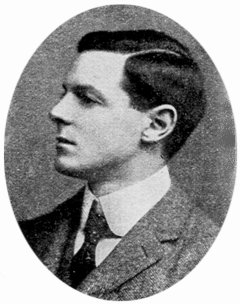
Campbell, Lieut Alfred Corkram (1872-1900), was killed in action at Nooitgedacht on 13 December 1900.
He served as a sergeant with Lumsden's Horse, followed by the appointment to the rank of lieutenant in the
Imperial Yeomanry, joining the 69th Company of the 6th Bn IY. At Nooitgedacht, he was killed while leading
and rallying his men to support a detached party which had been attacked by the Boers at dawn.
He was buried in the Nooitgedacht Pass, but later his remains were exhumed for re-interment in the old
cemetery in Krugersdorp. (Photograph: Graphic/Illustrated London News).
Reduction in the ranks
In September 1900, word began to spread among the Yeomanry about the decision made to return another volunteer unit, the City of London Imperial Volunteers (CIV), home to Britain. Although the CIV had been in South Africa since January 1900, the decision to send them home caused resentment among the Imperial Yeomanry. The constant, monotonous routine of patrolling was beginning to affect their enthusiasm for the war. Another cause of resentment was the policy of farm burning that had been imposed by Lord Roberts, the Commander-in-Chief, work that the educated men of the Yeomanry found particularly hard to accept. With morale running low, they began to volunteer for service outside their units. Regular Army regiments readily accepted these men as officers while government departments also offered these men jobs in civilian life. The reduction in the ranks caused by these transfers, along with the number decimated by disease and discharged on medical grounds, occurred at an alarming rate. There was no policy in place to reinforce the first Imperial Yeomanry contingent and, as a result, by the end of 1900, only about one-third of the original strength remained. Although the contingent had signed on for 'a year or for the duration of the war', it was clear that it was heading for disaster, unless something could be done quickly to remedy the decline in volunteer numbers. This realisation led to recruitment for a second, and larger, Imperial Yeomanry contingent in early 1901 (Asplin, 2000, Vol 1 , p6).
(This story is to be continued in the next issue of the Military History Journal, Vol 14 No 1, June 2007).
SELECT BIBLIOGRAPHY
(The full bibliography will appear at the end of Part 3 of this article, in Military History Journal, Vol 14 No 2, December 2007).
Asplin, K J, The Roll of the Imperial Yeomanry, Scottish Horse and Lovats'Scouts, 2nd Boer War, 1899-1902, Vol 1 (Salisbury, UK, 2000).
Amery, L (ed), The Times History of the War in South Africa, Vols 2-7 (London, 1902-9).
Creswicke, L, South Africa and the Transvaal War, Vols 3,7 (Edinburgh, 1900-2).
Corner, W, The story of the 34th Company (Middlesex) Imperial Yeomanry (London, 1902).
Jones, H W and G M, A Gazetteer of the Second Anglo-Boer War 1899-1902 (Milton Keynes, UK, 1999).
Moffett, E C, With the Eighth Division (Kingston-on- Thames, 1903).
Pakenham, T, The Boer War (London, 1979).
Report of His Majesty's Commissioners appointed to inquire into the military preparations and other matters connected with the War in South Africa (London, 1903).
South African War Casualty Roll, The 'South African Field Force', August to December 1900 (Suffolk, UK, 1982).
Van den Bergh, G, 24 Battles and Battlefields of the North-West Province (Potchefstroom, 1996).
Watkins Yardley, Lt Col J, With the Inniskilling Dragoons (London, 1904).
Watt, S, In Memoriam - Roll of Honour, Imperial Forces, Anglo-Boer War, 1899-1902 (Pietermaritzburg, 2000).
Watt S, 'The skirmish at Senekal - The battle of Biddulphsberg, May 1900' in Military History Journal, Vol 8 No 6, December 1991.
Williams, W, The life of General Sir Charles Warren (Oxford, UK, 1941 ).
Wilson, H W, After Pretoria - The Guerilla War, Vols 1,2 (London, 1902).
Wulfsohn, L, Rustenburg at War (Rustenburg, 1992).
Return to Journal Index OR Society's Home page
South African Military History Society / scribe@samilitaryhistory.org